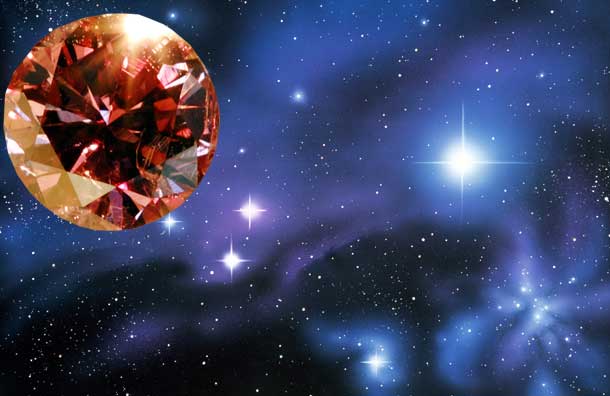In what could be called a gem of a discovery, astronomers claim to have found a planet entirely made of diamonds.

An international team of astronomers, led by Australia's Swinburne University of Technology professor Matthew Bailes, has discovered a planet made of diamond crystals, in our own Milky Way galaxy.
But, at 4,000 light years from Earth, it is out of human reach - for now.
The odd planet was discovered orbiting what's known as a millisecond pulsar — a tiny, fast-spinning corpse of a massive star that died in a supernova.
Pulsars are highly magnetized, rotating neutron stars that emit a beam of electromagnetic radiation. The radiation can only be observed when the beam of emission is pointing towards the Earth.
The new planet is far denser than any other known so far and consists largely of carbon. Because it is so dense, scientists calculate the carbon must be crystalline, so a large part of this strange world will effectively be diamond.
"The ultimate fate of the binary is determined by the mass and orbital period of the donor star at the time of mass transfer. The rarity of millisecond pulsars with planet-mass companions means that producing such exotic planets is the exception rather than the rule, and requires special circumstances," said Benjamin Stappers from the University of Manchester.
Astronomers estimate that the newfound planet is 34,175 miles (55,000 kilometers) across, or about five times Earth's diameter.
But, at 4,000 light years from Earth, it is out of human reach - for now.
The odd planet was discovered orbiting what's known as a millisecond pulsar — a tiny, fast-spinning corpse of a massive star that died in a supernova.
Pulsars are highly magnetized, rotating neutron stars that emit a beam of electromagnetic radiation. The radiation can only be observed when the beam of emission is pointing towards the Earth.
The new planet is far denser than any other known so far and consists largely of carbon. Because it is so dense, scientists calculate the carbon must be crystalline, so a large part of this strange world will effectively be diamond.
"The ultimate fate of the binary is determined by the mass and orbital period of the donor star at the time of mass transfer. The rarity of millisecond pulsars with planet-mass companions means that producing such exotic planets is the exception rather than the rule, and requires special circumstances," said Benjamin Stappers from the University of Manchester.
Astronomers estimate that the newfound planet is 34,175 miles (55,000 kilometers) across, or about five times Earth's diameter.








0 comments
Post a Comment